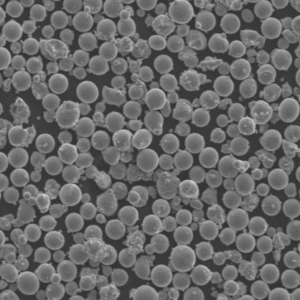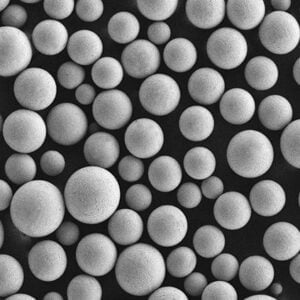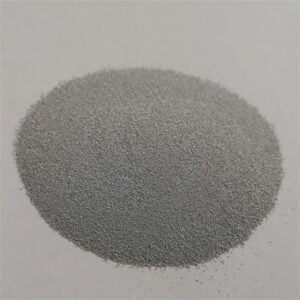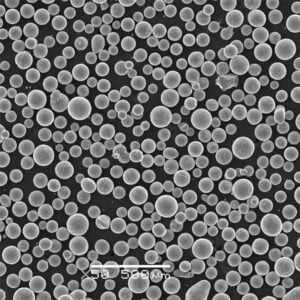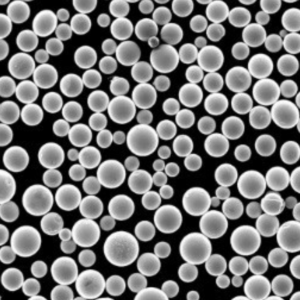積層造形アルミニウム
目次
アルミニウムは、その高い強度対重量比、優れた耐食性、熱特性、機械的性能が評価され、積層造形用の金属材料としてよく選ばれています。アルミニウムは 積層造形アルミニウム 品質とプリンターの能力が向上すれば、航空宇宙、自動車、消費者製品、建築など、新たな高価値用途で複雑なアルミニウム部品製造の恩恵を受けることができる。
この概要では、レーザー粉末床溶融法(PBF-LB)や直接エネルギー蒸着法(DED)などのAMプロセスで使用される一般的なアルミニウム合金の利点と、対応する特性、後処理手順、用途、主要サプライヤーについて説明します。比較表では、さまざまなアルミニウム材料とAM方法間のトレードオフを強調しています。
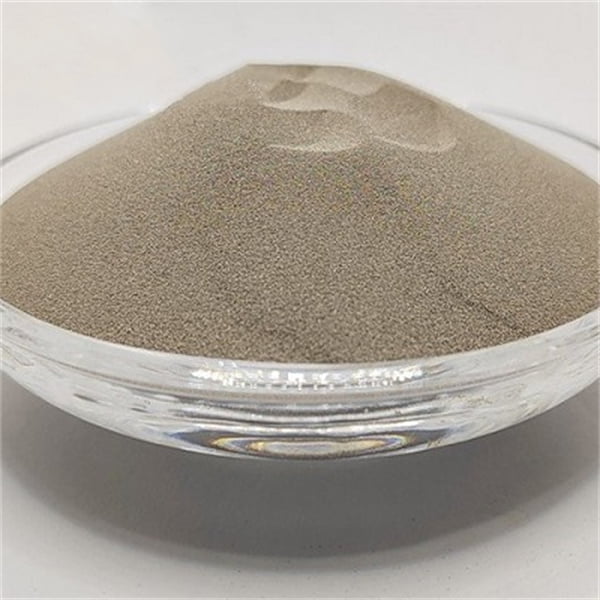
積層造形アルミニウムの概要
アルミニウムがAM用途にもたらす主な利点
- 軽量 - 密度が低いため、印刷部品の重量を軽減できます。
- 高強度 - 多くのアルミニウム合金の降伏強度は500MPaを超える。
- 優れた耐食性 - 保護酸化物外層
- 高い熱伝導性 - 放熱性
- 優れた高温特性 - 300-400℃まで
- 導電性 - エレクトロニクス用途に有用
- 低コスト - チタンやニッケル合金よりも安価
- リサイクル性 - 粉体は再利用可能で、材料コストを削減できる。
アルミニウムは、AMの設計の自由度と相まって、あらゆる産業でより軽量で性能の高い部品を可能にします。アルミニウム粉末製造の改良により、鋳造や錬金術に匹敵する高密度の部品を製造する能力が拡大しました。
AM用アルミニウム合金粉末材料
積層造形用に最適化されたアルミニウム合金は、制御された粉末粒子製造と、特性を向上させるためのインテリジェントな合金添加を利用している。
一般的なアルミニウムAM合金組成
| 合金 | Si% | Fe% | Cu% | Mn% | Mg% | その他 |
|---|---|---|---|---|---|---|
| AlSi10Mg | 9-11 | <1 | <0.5 | <0.45 | 0.2-0.45 | – |
| AlSi7Mg0.6 | 6-8 | <1 | <0.5 | <0.45 | 0.55-0.6 | – |
| スカルマロイ | 4-6 | 0.1-0.3 | <0.1 | <0.1 | 0.4-0.7 | Zr Sc |
| C35A | 3-5 | 0.6 | 3.0-4.0 | 0.2-0.7 | 0.25-0.8 | – |
| A20X | 3-5 | 0.6 | 3.5-4.5 | 0.2-0.8 | 0.05-0.5 | – |
ケイ素は一般的な強化剤である。Fe、Cu、Mgなどの微量元素は特性を最適化する。Scalmalloy®のようなユニークな合金は、錬合金を超える超高強度を達成するためにスカンジウム-ジルコニウム析出ナノ粒子を使用しています。
アルミニウムAM合金の主な特徴
| 合金 | 引張強度 | 密度 | レイヤー浸透深度 |
|---|---|---|---|
| AlSi10Mg | 400-440 MPa | 2.67 g/cc | 70-100 μm |
| AlSi7Mg0.6 | 420-500 MPa | 2.66 g/cc | 60-80 μm |
| スカルマロイ | 550MPa以上 | 2.68 g/cc | 50-70 μm |
強度が高いと、再溶解サイクルを必要とする前に達成可能な単一層の深さが制限される。
仕様 積層造形アルミニウム
流動性、粒子形状、化学的純度などの重要な粉末特性が、アルミニウムのAM加工品質を決定する。
Al粉末の粒度分布規格
| 測定 | 代表的な仕様 |
|---|---|
| サイズ範囲 | 15 - 45 μm |
| 粒子形状 | ほとんどが球形 |
| 中央値(D50) | 25-35 μm |
粒度分布、形態、汚染レベルを厳密に制御することで、欠陥のない緻密な印刷部品を実現します。
アルミニウム印刷粉末の化学規格
| エレメント | 組成限界 |
|---|---|
| 酸素 (O2) | 最大0.15% |
| 窒素(N2) | 最大0.25% |
| 水素 (H2) | 0.05%最大 |
ガス状不純物の制限により、印刷されたアルミニウム部品に広範な気孔や内部ボイドが発生するのを防ぎます。
後処理の手順 積層造形アルミニウム
付加製造アルミニウム部品の一般的な後処理方法には、以下のようなものがある:
アルミニウムAMの後処理技術
熱処理
T6熱処理 - 溶解加熱と老化サイクルで強度、硬度、延性を向上。多くのAl合金で最高の機械的性能を発揮するために不可欠。
表面仕上げ
機械加工、ビーズブラスト、または外面研磨は、寸法精度と滑らかな表面仕上げを提供します。陽極酸化処理により、アルミニウムの表面を着色し、保護することができます。
HIP(熱間静水圧プレス)
高温+高圧により、内部のボイドや空隙を最小限に抑えます。リーククリティカルな用途に有効ですが、工程が追加されます。
機械加工
ネットシェイプのAM部品に精密なベアリング表面やスレッドなどの特徴をCNC加工。従来の製造に比べ、最大60%の加工削減を達成。
アルミニウムの積層造形技術
最新の金属3Dプリンターは、選択的レーザー溶融、電子ビーム、バインダージェットを活用して、従来の方法では実現できなかった複雑なアルミニウム部品を造形します。
アルミニウムAMプロセスの比較
| 方法 | 説明 | メリット | 制限事項 |
|---|---|---|---|
| パウダーベッドフュージョン - レーザー | レーザーが金属粉末層の領域を選択的に溶融する | 優れた精度、材料特性、表面仕上げ | 比較的遅いビルド速度 |
| パウダーベッド核融合 - 電子ビーム | 高真空での電子ビーム溶解 | 優れた一貫性、高密度 | 材料の選択肢が限られ、設備コストが高い |
| 直接エネルギー蒸着 | 集束された熱源が金属粉末スプレーを溶かす | 大型部品、修理 | 表面仕上げが劣る、形状の制約 |
| バインダー・ジェット | 粉体粒子を結合するために噴射されるバインダー | 製造速度が非常に速く、設備コストが低い | 機械的性能が弱く、二次焼結が必要 |
レーザーベースのパウダーベッドアプローチは、今日、ほとんどの機能的なアルミニウム部品に最高のオールラウンドな機能を提供します。
アルミニウムAM部品の用途
軽量、高強度、耐熱性というアルミニウムAMの特性は、次のような要求に適している:
積層造形アルミニウム部品を使用する産業
航空宇宙 - ブラケット、スティフナー、熱交換器、UAV部品
自動車 - カスタムブラケット、パワートレイン、シャシー、ドライブトレインシステム
インダストリアル - 軽量ロボット、金型、プロトタイピング
建築 - オーナメント、カスタムメタリックアート
消費者 - エレクトロニクス、カスタマイズ製品
アルミニウムAMは、複雑なミッションクリティカルなアプリケーションに最適な新しい設計の可能性を解き放ちます。
アルミプリントパウダーのサプライヤー
積層造形プロセス用に特別に最適化された高純度アルミニウム合金粉末は、主要な金属材料サプライヤーによって提供されている:
アルミニウムパウダーの主要企業
| 会社概要 | 一般的な合金等級 | 標準価格/Kg |
|---|---|---|
| エーピーアンドシー | A20X、A205、カスタム合金 | $55 – $155 |
| サンドビック・オスプレイ | AlSi10Mg、AlSi7Mg0.6、Scalmalloy®(スカルマロイ | $45 – $220 |
| LPWテクノロジー | AlSi10Mg、Scalmalloy®(スカルマロイ | $85 – $250 |
| プラクセア | AlSi10Mg, AlSi7Mg0.6 | $50 – $120 |
価格は、合金の選択、パウダーサイズの仕様、ロット数、必要な証明書によって異なる。
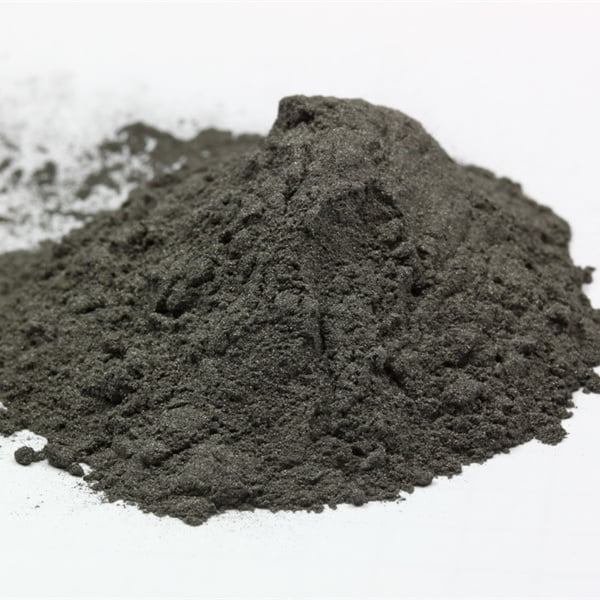
よくあるご質問
レーザー粉末床溶融積層造形に最適なアルミニウム合金は?
AlSi10Mgは、アルミニウム合金のレーザー粉末床3Dプリンティングのほとんどの用途において、最高のオールラウンドな印刷性、機械的特性、耐食性を提供します。
アルミニウムのAMパウダーには、どのような粒度分布が推奨されますか?
平均粒径が25~35μmのガウス曲線は、一般的なレーザー粉末溶融装置で最適な粉末ベッド密度と均一な溶融挙動を提供します。
なぜスカルマロイは先進的なアルミニウム合金なのか?
Scalmalloyは、従来のアルミニウム冶金では達成できなかった新しいスカンジウム含有組成により、適度な伸びと破壊靭性を維持しながら、均一な析出強化構造により比類のない強度を実現します。
アルミニウムの積層造形後に熱処理を行うべきか?
はい、熱処理は多くのアルミニウムAM合金の微細構造を改善し、機械的特性を向上させます。典型的なT6処理では、溶体化加熱の後に人工時効処理を行い、析出強化現象による著しい特性改善を行います。
AMアルミ部品ではどのような表面仕上げが可能ですか?
いくつかの機械加工、研削、サンディング、研磨作業の後、表面粗さ(Ra)値が10μm未満になることは、使用されるAMプロセスによっては、付加製造アルミニウム部品で達成可能である。より集中的な仕上げにより、光学グレードの鏡面を提供することができます。一般的な仕上げには、着色オプションと組み合わせて耐食性や耐摩耗性を高める陽極酸化処理も含まれます。
シェアする
MET3DP Technology Co., LTDは、中国青島に本社を置く積層造形ソリューションのリーディングプロバイダーです。弊社は3Dプリンティング装置と工業用途の高性能金属粉末を専門としています。
関連記事
Met3DPについて
最新情報
製品

3Dプリンティングと積層造形用金属粉末







